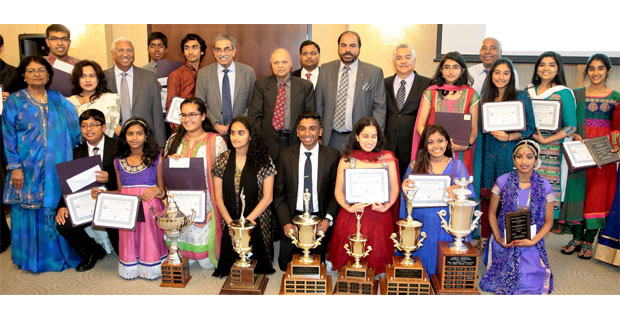RECOGNISING YOUNG INDIANS
It was in April 2016 that the Indian American Heritage Foundation organized its 30th annual awards function. For three decades the IAHF has recognized, honoured and rewarded the best and brightest students graduating from high schools from within the Indian American community. Thirty years, by no stretch of imagination, is a small time for dedicating and committing to raise funds to reward children. But Inder Singh, with help from some equally committed people, has organized the award function with a passion since 1987. As John Dunne says, no man is an island. Inder Singh worked wholeheartedly with the community, starting with Prof Rajen Anand, an equally committed person. He then worked with Dr Syal as his chief co-worker. Currently, the key people in the IAHF team include Kewal Kanda and Ashok Madan. Inder Singh is a past president of the National Federation of Indian American Associations, current executive trustee of the GOPIO Foundation (as well as former president and chairman, GOPIO International). He chaired the committee that organized the Regional Pravasi Bhartiya Divas in Los Angeles in November 2015. A well known author, he lives with his wife, Mrs Deepi Singh, in Tarzana, a suburb of Los Angeles, California. He speaks to Editor Sayantan Chakravarty
“No man is an island”
—John Donne
Please tell us how the story of recognizing and rewarding excellence among Indian American school students unfolded?
In 1986, we organized a convention in Los Angeles under the banner of National Federation of Indian American Associations (NFIA) – a nation-wide umbrella body of Indian American organizations. A large majority of us at the time were first generation Indians in America. There were several settlement issues our community was facing. Our young children were also experiencing many issues of growing up in two cultures. As part of the convention programme, we included some seminars where speakers and young people discussed issues important to the Indian American youth. The overwhelming participation of young people in the seminars led to the formation of the Indian American Cultural and Educational Foundation in 1987. The Foundation started programmes where the youth could openly participate and discuss issues of a contemporary nature freely.











Comments.